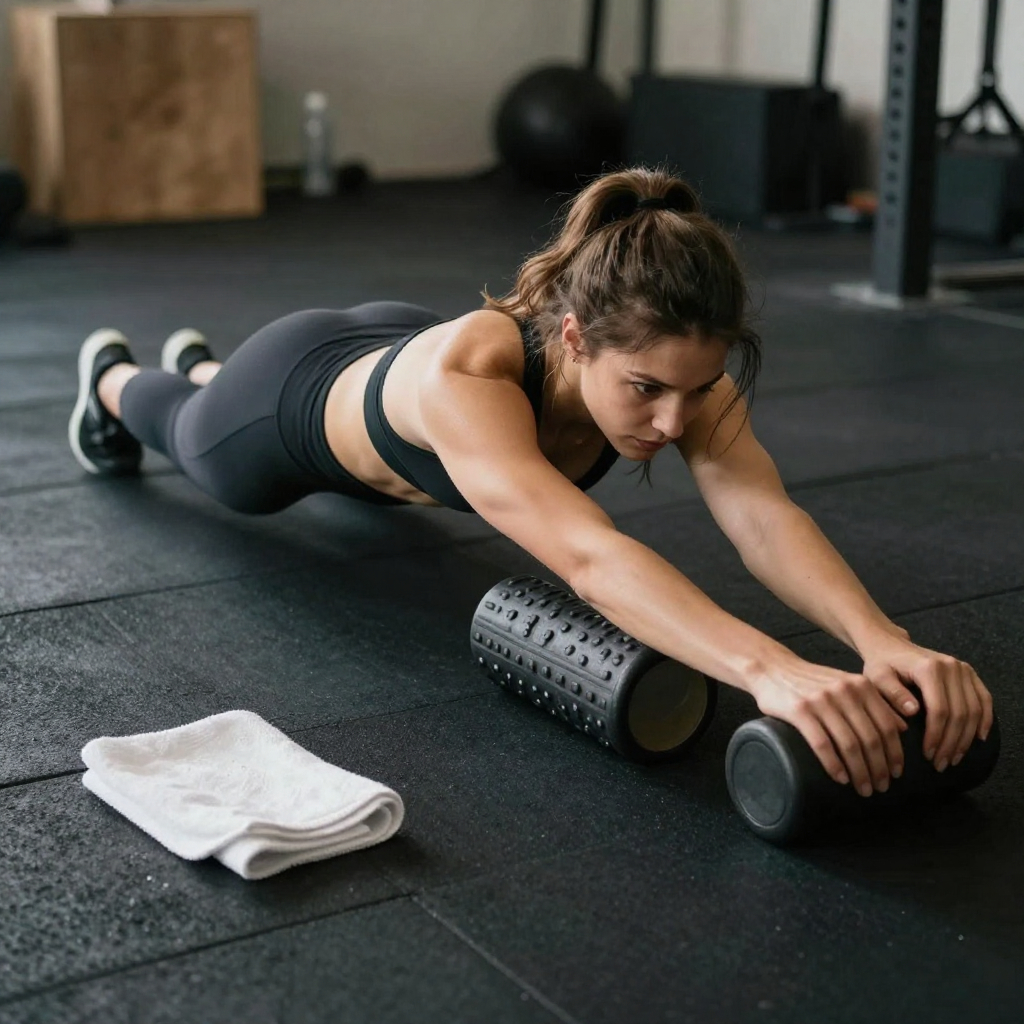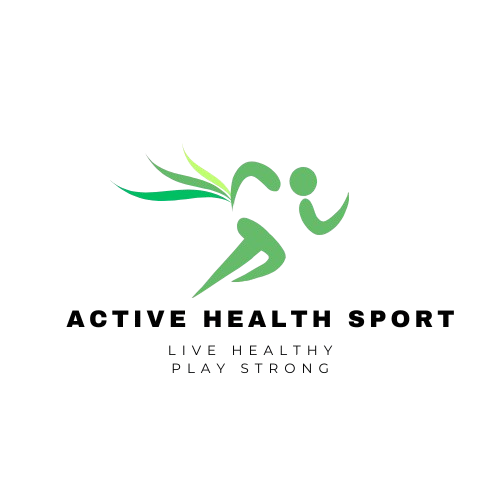The Desk Job Dilemma
In 2025, more than 70% of professionals spend over 6-8 hours sitting daily. Whether working in a corporate office or remotely at home, prolonged sitting has become the silent enemy of health. From chronic back pain to low energy, desk workers are among the most affected.
This is where functional fitness steps in. Unlike traditional workouts that isolate muscles, functional training focuses on real-life movement patterns, helping your body handle the stress of daily tasks like sitting, standing, lifting, and bending.
In this latest blog, we’ll explore how functional fitness directly addresses the challenges of desk workers, with practical solutions, real-life case studies, research-backed tips, and step-by-step routines.
What Is Functional Fitness?
Functional fitness is the practice of training your body to perform movements that mirror everyday life. Unlike bodybuilding or purely aesthetic training, its purpose is to make your body move better, feel stronger, and stay pain-free in real-world scenarios.
Every exercise in functional training connects to daily actions, like sitting, standing, lifting, or twisting, so the benefits go far beyond the gym.
1. Mobility – The Foundation of Healthy Movement
Mobility is more than flexibility; it’s about how well your joints can move through their full range of motion under control.
- Why desk workers need it: Hours of sitting shorten hip flexors, tighten hamstrings, and reduce shoulder mobility. This stiffness contributes to back pain and poor posture.
- Functional solution: Hip openers, thoracic spine rotations, and shoulder mobility drills keep joints fluid and reduce aches.
- Real-life benefit: Being able to bend down to pick up a dropped pen without straining your lower back.
2. Posture – Reversing the Desk Slouch
Posture is the body’s natural alignment when standing, sitting, or moving. Poor posture from prolonged desk work often leads to hunched shoulders and a forward head position.
- Why desk workers need it: Slouching compresses the spine, weakens postural muscles, and puts pressure on the neck.
- Functional solution: Strengthening the upper back, core, and glutes while stretching the chest and hip flexors.
- Real-life benefit: Sitting tall in long Zoom meetings without neck pain or the “hunched” feeling by evening.
3. Balance – Stability in Motion
Balance isn’t just about standing on one foot; it’s the body’s ability to remain stable during movement.
- Why desk workers need it: Sedentary routines weaken stabilizing muscles in the hips, ankles, and core, leading to poor coordination.
- Functional solution: Exercises like single-leg stands, bird-dogs, or step-ups engage stabilizers and retrain the nervous system.
- Real-life benefit: Walking up stairs or stepping off a curb without wobbling or risking a fall.
4. Strength – Useful Power for Daily Tasks
Strength in functional fitness means training muscles to work together, not in isolation, for tasks you actually face in life.
- Why desk workers need it: Weak glutes, abs, and back muscles shift strain to the spine, causing chronic pain.
- Functional solution: Compound movements like squats, hip hinges, rows, and push-ups build “whole-body” strength.
- Real-life benefit: Carrying groceries, lifting a child, or moving office equipment without throwing out your back.
5. Endurance – Sustained Energy Throughout the Day
Endurance in functional training isn’t about marathon running, it’s about keeping energy levels high and muscles resilient throughout daily tasks.
- Why desk workers need it: Long workdays often lead to fatigue, poor circulation, and “afternoon crashes.”
- Functional solution: Short functional circuits (10–20 minutes) combined with micro-movement breaks prevent energy dips.
- Real-life benefit: Powering through late-afternoon meetings without coffee crashes or brain fog.
Why This Matters for Desk Workers
When your routine revolves around sitting, the body gradually forgets how to move efficiently. Functional fitness retrains your muscles and joints to perform as they should, counteracting the negative effects of prolonged sitting.
- Sit and stand with ease instead of struggling with stiffness.
- Protect your spine from chronic pain through core stability.
- Keep blood flowing to fight fatigue and brain fog.
- Stay mentally sharp because a body that moves well supports a focused mind.
Key Principle: Train for life, not just for looks. Strength gained in the gym should serve you in real-world moments, whether it’s standing tall during presentations, carrying your laptop bag, or simply living without pain.
Also Read the Latest: 12 Must-Try Poses Yoga for Desk Workers to Counteract Sitting
Why Desk Workers Suffer: Back Pain & Fatigue Explained
| Cause | Impact on Desk Workers | Functional Fitness Solution |
| Poor posture from prolonged sitting | Neck and lower back pain | Core stability and mobility drills |
| Tight hip flexors and hamstrings | Limited mobility, pelvic tilt | Stretching and dynamic mobility flows |
| Weak glutes and abs | Extra stress on the spine | Functional glute and core strengthening |
| Lack of blood circulation | Fatigue and low energy | Short active breaks with movement snacks |
Case Studies: Real Results from Functional Fitness
Case Study 1: The Remote Worker Who Reclaimed His Posture
Profile: Matthew Brooks, a 36-year-old software engineer from Austin, Texas, spent nearly 10 hours daily at his desk, juggling long coding sessions and back-to-back virtual meetings.
Problem: After years of remote work, Matthew developed chronic lower back pain, tight hips, and mid-day fatigue that made it hard to stay focused past 3 PM.
Intervention: On the advice of a physical therapist, he began a 6-week functional fitness program combining hip openers, glute activation drills, and posture-corrective core exercises. He also started standing every 45 minutes to stretch.
Result: By week six, Matthew reported a 70% reduction in pain and increased mobility. His energy levels stabilized, and his productivity during late-afternoon coding sessions improved noticeably.
Supporting Research: A study published by the Journal of Physical Therapy Science found that functional exercise programs significantly improve lower back pain and spinal flexibility in sedentary workers (source).
Case Study 2: The Corporate Manager Who Beat Energy Burnout
Profile: Karen Willis, 42, a marketing manager from Chicago, Illinois, worked in a demanding hybrid setup that required frequent travel and screen-heavy days.
Problem: Despite being health-conscious, she struggled with afternoon crashes, neck stiffness, and poor concentration, especially after long team meetings.
Intervention: She began integrating two 10-minute functional movement breaks each day, focusing on resistance band pulls, thoracic mobility stretches, and breathing resets.
Result: Within a month, Karen noticed a 25% improvement in focus and no longer experienced afternoon slumps. Her posture also improved, as confirmed by her chiropractor.
Supporting Research: According to a 2022 Harvard Health review, short functional workouts enhance energy and focus by improving blood flow and oxygen delivery to the brain (source).
Case Study 3: From Office Desk to Fitness Advocate
Profile: Daniel Harper, 39, an HR consultant from London, UK, and co-founder of WorkWell UK, a wellness startup helping employees integrate micro-movement routines into work hours.
Problem: Years of long sitting hours led to tight hamstrings, poor circulation, and early signs of metabolic slowdown.
Intervention: Daniel began combining micro mobility drills and functional strength exercises into his daily routine, bodyweight squats, desk push-ups, and hip flexor stretches between meetings. He encouraged his team to join via short virtual “stretch breaks.”
Result: After 10 weeks, Daniel reported sustained energy, improved sleep quality, and measurable gains in strength and flexibility. His initiative also boosted team morale and physical well-being.
Supporting Research: Findings in the Journal of Occupational Health indicate that integrating movement into work routines reduces musculoskeletal discomfort and boosts overall productivity (source).
Share Your Story with Active Health Sport
If you’ve experienced your own transformation through functional fitness or workplace movement routines, we’d love to hear from you! Share your story with the Active Health Sport community, your experience might inspire someone to take the first step toward better health.
📩 Send us your journey at contact@activehealthsport.com or simply leave a comment below. Together, we grow stronger, one story at a time.
Also Read the Latest: Why Chair Yoga Is Essential for Office Workers’ Well-Being
Functional Fitness vs Traditional Gym Training for Desk Workers
| Aspect | Traditional Gym | Functional Fitness |
| Focus | Isolated muscles (biceps, chest, etc.) | Real-life movement patterns |
| Benefit | Aesthetics, strength in isolation | Posture, energy, pain relief |
| Time | 45–60 minutes | 15–30 minutes effective routines |
| Accessibility | Requires gym equipment | Can be done at home or office |
Functional Fitness Exercises for Desk Workers
Here’s a real-world 20-minute functional routine that can be done at home or in the office:
| Exercise | Reps/Duration | Benefit |
| Cat-Cow Stretch | 1 min | Mobilizes spine, relieves stiffness |
| Hip Flexor Stretch | 30 sec/side | Releases tight hips from sitting |
| Glute Bridge | 12–15 reps | Strengthens glutes, supports lower back |
| Bird-Dog | 10 reps/side | Improves core stability |
| Chair Squats | 12 reps | Builds strength for standing/sitting |
| Resistance Band Rows | 12–15 reps | Corrects posture, strengthens back |
| Wall Angels | 8–10 reps | Opens chest, improves shoulder mobility |
Energy Boosting Strategies With Functional Fitness
- Movement Snacks: 3-5 minutes of functional mobility every 2 hours.
- Active Meetings: Walking calls or standing breaks during video calls.
- Desk Ergonomics + Functional Training: Combining proper chair/desk setup with posture exercises for maximum relief.
- Breathwork Integration: Functional training combined with deep breathing improves oxygen flow and combats fatigue.
Practical Tips for Desk Workers
- Set a Movement Timer: Every 60 minutes, do 2 minutes of functional stretches.
- Invest in Resistance Bands: Portable, affordable, and highly effective for posture correction.
- Prioritize Morning Mobility: Begin the day with a 5-minute functional flow.
- Pair with Ergonomics: Adjust your desk and chair height to reduce stress on the spine.
- Consistency Over Intensity: Small, daily functional sessions matter more than occasional heavy workouts.
Related FAQs
How quickly can desk workers feel relief from back pain with functional fitness?
Most desk workers notice noticeable relief from back pain and stiffness within 3 to 4 weeks of consistent functional fitness practice. Improved posture, better spinal mobility, and reduced muscle tightness are among the first visible benefits.
Can functional fitness replace my regular gym routine?
Not entirely. Functional fitness complements traditional gym workouts by enhancing mobility, balance, and core strength. However, for busy professionals, short functional sessions can provide a complete workout that supports long-term posture and energy.
Do I need equipment for functional fitness at work?
No, you don’t need special equipment. Most exercises use body weight, focusing on mobility, stability, and core engagement. A small resistance band or chair can add variety but remains entirely optional.
How long should a desk worker train daily?
For maximum benefit, aim for 15-20 minutes of functional training daily. Combine that with short micro-movement breaks every hour to prevent stiffness and boost energy throughout your workday.
Is functional fitness safe for people with severe back issues?
Yes, functional fitness is generally safe if done correctly. However, individuals with chronic or severe back pain should consult a physiotherapist or certified trainer before starting to modify movements safely.
Can functional fitness improve focus and productivity at work?
Absolutely. Studies show that even short bouts of movement enhance blood circulation, brain oxygenation, and focus. Regular functional training helps reduce fatigue and mental fog, boosting overall performance during long desk hours.
You might also like the following…
- Active Recovery for CrossFitters: Walking & Mobility Explained
 CrossFit pushes athletes to their physical limits, lifting heavy, sprinting, jumping, and performing high-intensity functional movements. While the intensity delivers impressive gains, it also places tremendous stress on muscles, joints, and the nervous… Read more: Active Recovery for CrossFitters: Walking & Mobility Explained
CrossFit pushes athletes to their physical limits, lifting heavy, sprinting, jumping, and performing high-intensity functional movements. While the intensity delivers impressive gains, it also places tremendous stress on muscles, joints, and the nervous… Read more: Active Recovery for CrossFitters: Walking & Mobility Explained - How Walking and Stretching Boost CrossFit Recovery (Duo)
 CrossFit recovery, athletes often chase intensity, heavy lifts, quick transitions, and heart-racing WODs (Workouts of the Day). Yet, the key to consistent progress isn’t just in the effort you put inside the box,… Read more: How Walking and Stretching Boost CrossFit Recovery (Duo)
CrossFit recovery, athletes often chase intensity, heavy lifts, quick transitions, and heart-racing WODs (Workouts of the Day). Yet, the key to consistent progress isn’t just in the effort you put inside the box,… Read more: How Walking and Stretching Boost CrossFit Recovery (Duo) - How Nutrition Impacts Sleep: Foods That Help (and Hurt) Your Night’s Rest
 You Are What – and When – You Eat We often think of sleep as a nighttime habit, but the truth is that good sleep begins with what you eat during the day.… Read more: How Nutrition Impacts Sleep: Foods That Help (and Hurt) Your Night’s Rest
You Are What – and When – You Eat We often think of sleep as a nighttime habit, but the truth is that good sleep begins with what you eat during the day.… Read more: How Nutrition Impacts Sleep: Foods That Help (and Hurt) Your Night’s Rest

Kait Amazra is the founder and lead writer of Active Health Sport. With over 25 years of experience in health, fitness, and wellness education, Kait combines professional expertise with a passion for helping people live stronger, healthier, and more balanced lives.
As a licensed health and fitness professional, Kait has worked alongside industry experts to deliver evidence-based insights on physical activity, nutrition, recovery, and holistic well-being. Through Active Health Sport, Kait’s mission is to make trusted, practical, and science-backed health information accessible to everyone, from beginners building new habits to athletes seeking peak performance.

